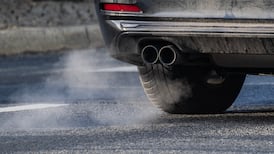It still is not clear, 3.5 million deaths on, how Covid-19 emerged in the human population. Understanding how and where the virus originated is crucial to prevent it happening again, but, while the search for a vaccine has seen scientists worldwide collaborating to an extraordinary degree, the search for a cause has been more troubled, hobbled by politics and the need to enlist science to attribute blame.
A broad scientific consensus has backed the idea that the most likely explanation is that Covid-19 jumped to humans from an animal host in a natural event, probably in a "wet" market in Wuhan dealing in wildlife brought from across China and beyond. When wild animals are kept in close quarters, viruses have an opportunity to jump from species to species. Genetics has shown that almost every disease mankind has faced jumped from animals: bubonic plague from rodents, measles probably from cows, whooping cough maybe from dogs.
But, to date, no intermediate animal host has so far been identified.
Now, however, President Biden has ordered US intelligence agencies to conduct a review of what is known about the origins of Covid-19 and whether it could be man-made and have escaped from a lab', the Wuhan Institute of Virology (WIV), which has been studying coronaviruses in bats for over a decade. The theory, for which no positive evidence has yet been adduced, had been promoted and politicised by Donald Trump and anti-China hawks and just as vehemently rejected by Beijing which, unfortunately, did little to assist investigations by strictly curtailing access to its scientists and data. A World Health Organisation inquiry concluded nevertheless that the lab-leak theory was "extremely unlikely".
But precisely both the lack of clear, unimpeachable evidence that the lab was not a source - a high, if not impossible, standard - and the failure to find an animal host has revived old rejected theories. A letter to Science by leading epidemiological researchers has argued that “We must take hypotheses about both natural and laboratory spillovers seriously until we have sufficient data”, while intelligence reports have emerged that three unnamed staff at the WIV had been sick enough to go hospital in November 2019 with symptoms that might have been coronavirus. Might!
Questions have also been raised about whether research on coronavirus at WIV was being conducted at a sufficiently high biosecurity level. Far from evidence of a leak, however.
It is crucial nevertheless that the research continues along both lines of inquiry, and that it do so with unhampered access and unfettered by political posturing in Beijing or Washington. Preoccupations with national pride and blame games must not be allowed to hinder what must be a collective global quest. Too much is at stake.










